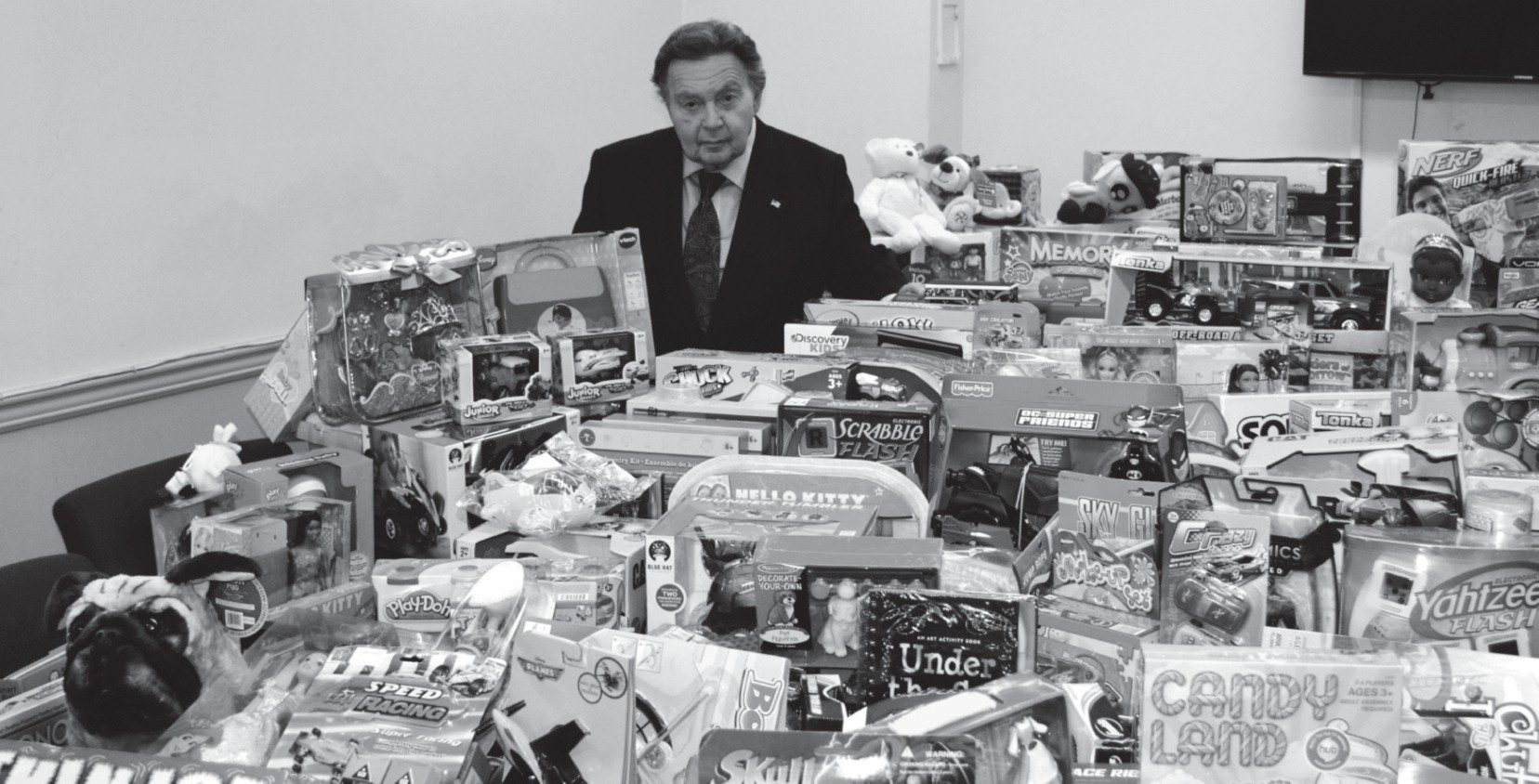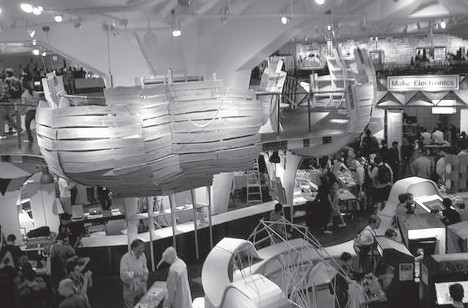Science & Technology Fun At Maker Faire
Billed as the greatest show and tell on Earth, The World Maker Faire, held last weekend Saturday and Sunday, Sept 20-21 at the New York Hall of Science, brought presenters from around country and globe together to learn from each other’s passion and exhibits on display.

Begun in the San Francisco Bay Area in 2006, the Maker Faire gives educators, technology professionals, artists and authors a platform to present their ideas and creations. The Maker Faire highlights Do It Yourself hobbyists and creators to make their work more visible to a wider audience.
Attending this year’s event from the borough were Queens College students that built a 3-D scanner and NYC-based Movement Creative which showcased their Pop-up Playground, a portable activity set that can fit in a sedan and takes about 20 minutes to set-up, according to co-creator Caitlin Pontrella.
From a mask with a built-in microchip that can detect poor air quality, to presenters in homemade Ghostbusters costumes and bogey catching backpacks, to a beer garden and many different types of food to choose from, this year’s Maker Faire held something exciting for all ages and backgrounds.

Many interactive science exhibits were featured, and an outer-space themed mini-golf course delighted and educated attendees. The mini-golf course featured holes with cosmic themes like splash down, for spacious skies, reentry angle, space junk and space docking.
Other exhibits included the stuffed animals hug matching game, a disco floor-looking, interactive board game called Labyrinth, an outer-space soccer game and handmade guitars and skateboards.
Five Queens College students presented their 3-D Connect Scanner which made an accurate duplicate of an entire persons body. It was built by juniors and seniors as part of a special projects class––Wilson Bordier, Joel Esquite, Ashby Lau, James Taylor and Leroy Leslie––three of whom are majoring in computer science, and two in art and graphic design.
The special projects class was a way to blend computer science and graphic design, and to begin commingling the science and art departments at Queens College, according to Art Professor Matt Greco.
“So really its sort of a multidisciplinary task, trying to bring the two departments together, bring the two skills together. We see the team … see possibilities for both technology and art when it comes to these kinds of things,” Greco said
“We’re trying to integrate technologies into our art program,” Greco said. “And then to expand our offerings and give opportunity for the students to do something both creative and technological I formed a special projects class where I tasked them to build this full size Kinnect 3-D scanner.”
He mainly assisted the students if they got stuck, but gave all credit for completing the task they were assigned to the students.
“I can encourage the students and I can get them motivated to build something,” he said. “Cause really it’s facilitating the process. They really bring the knowledge to the table.”
The scanner was previously exhibited at some school events, and shown on campus, but the event was the first time it was on display for the general public.
Because the project takes students from different majors, Greco designed the class “as if it was a project at Google or Facebook or something where they’re given a task and they need to complete it from start to finish,” he said.
They were additionally tasked with acquiring the materials, designing how its going to be built, and asking “is it financially viable to sell, could it be replicated how would you use it,” Greco stated.
“And so we show people while the scans are getting captured how they look afterwards, what the process is, by providing a screen that faces the public. So it shows them the process,” he added.
The project took about five months from start to finish, he said. The students reflected on their experience in the class and the visitors’ reactions. . “Honestly I just find it really fun, I think it’s cool, it reminds me of just games and stuff and I really enjoy that, so I was just like let me do it. And I found it fun, Bordier said.
“I like technology, I like art so this was a good combination of the two so I was all for it,” he added.
Another student that worked on the project wants to land in advertising after college, and “I want to try and to implement 3-D into advertising,” Esquite said.
“We provide a scan of their body and we’re going to email them later and then from there if they have their own 3-D printer, they can print it out themselves or can get it printed,” Bordier said.
Pontrella and co-founder Jesse Danger have been running the program for about two years and Danger has been teaching Parkour for almost four years, Pontrella said.
The Pop-up Playground was introduced in January 2013.
Pontrella noted places to play and run off energy are limited for people over age 12 because individuals over that limit are not supposed to be in playgrounds unless accompanied by a child.
“For adults there’s not too many places to play,” Pontrella said. “The set-up can work for any age.”
“We really wanted to create a playground that you can take anywhere,” she said.
Pontrella and Danger, “yes that is my real name, sort of,” he said, hold workshops on how to use it, set up equipment demonstrations and have showcased the Pop-up Playground in schools in the city.
“We teach them how to use their public spaces and in the winter bring in equipment,” she said.
And the entire set is portable.
“The whole thing can fit in my car, it can fit in my closet in my bedroom,” she said.
A six-sided Allen Wrench is the only tool that is needed to set it up, Danger added.
They also consult with some schools on how to build playgrounds.
Danger also teaches both kids and adults how to safely use Parkour techniques. This “is a holistic training discipline using movement that developed from military obstacle course training where practitioners aim to get from point A to B in the most efficient way possible,” according to a Wikipedia entry.
Though some may fear it is a dangerous pursuit, “in three or four years of operating and teaching he has had no injuries,” Pontrella said.
I think it’s important to have hard surface playgrounds so kids can learn how to manage risk,” she said. And Parkour teaches how “to learn what are acceptable risks to take.
“It teaches adults and kids, what is acceptable risk and what is not so we can learn about what is acceptable risk.”
“And kids love it, and you can see,” Danger said.



































